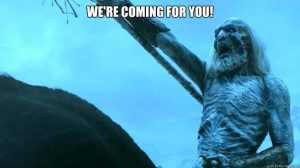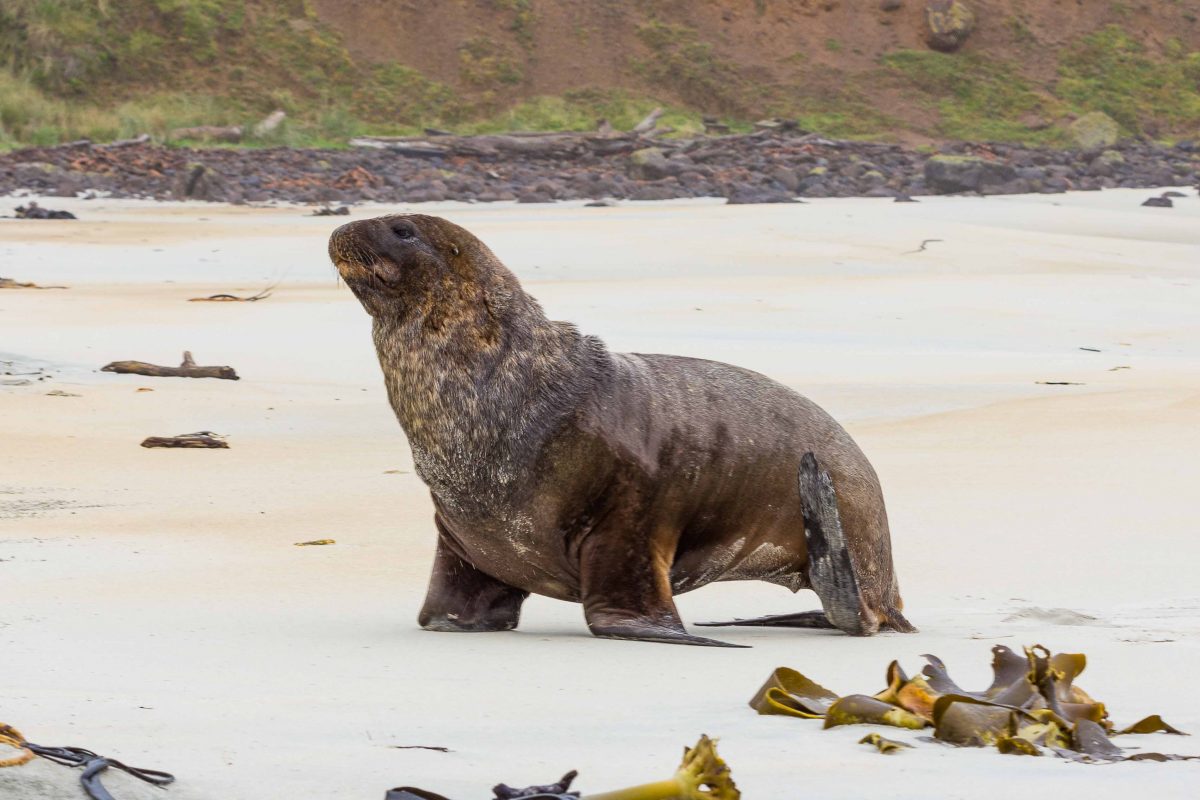‘What’s in a name? that which we call a rose. By any other word would smell as sweet’ wrote the bard when he penned Romeo and Juliet. Names are important. They evoke emotions, power, a sense of pride and ownership. Names can transcend language barriers and allow global communication of science. Naming biodiversity is no different.
Recently I gave a talk to Year 13 secondary school students about our lab’s ancient DNA research on the confusingly named New Zealand Sea Lion (Phocarctos hookeri), previously known as Hooker’s Sea Lion, but more on this later. At the time of Polynesian settlement around 750 years ago, there were three genetically distinct lineages of sea lion in the region: one was restricted to the Chatham Islands 650 km east of New Zealand, the second was restricted to mainland New Zealand; and the third, which we know as the New Zealand/Hooker’s Sea Lion, was restricted to the subantarctic Auckland and Campbell Islands. Within a few hundred years of Polynesian settlement, due to low but sustained levels of hunting during a period of stable climate, the prehistoric mainland and Chatham Island lineages were extinct, gone the way of the Moa and Dodo.

Fast-forward a few decades, and the White Walkers invade Westeros. Lacking food and warmth, the inhabitants of Westeros retreat to warmer climes. Hang on a minute, that didn’t happen I hear you say. But something very similar did happen. The Little Ice Age started, famous in the northern hemisphere for freezing the Thames River and frost fairs. With the extinction of all the big animals like Moa, sea lion and Southern Elephant Seal, and cooling temperatures, Polynesians/Māori abandoned southern New Zealand and retreated to warmer climes where Polynesian horticulture was possible. Sea lions, adapted to the cold climes of the subantarctic, saw their chance. Applying for the job vacancy of ‘sea lion’ in the now colder New Zealand ecosystem, the subantarctic sea lions extended their range to the southern mainland and, in the absence of human pressure, built up numbers. Sadly, these colonists went extinct during the early 19th Century due to Māori and European sealing activities. It wasn’t until 1992 that ‘Mum’, another subantarctic colonizer, arrived on Otago Peninsula and started breeding.
Now, since all three lineages are currently part of the same species, Phocarctos hookeri (their taxonomic/species status cannot be properly assessed until additional material is found to examine the shape of fossil bones), these extinctions and colonizations are a little different from those inferred about the replacement of the previously exterminated Waitaha Penguin by the subantarctic Yellow-Eyed Penguin, or the Poūwa by the Australian Black Swan. This difference means that the present mainland population of the subantarctic New Zealand/Hooker’s Sea Lion is a so called ‘native invader’.
At this news, complete with Games of Thrones analogies for the Little Ice Age, one of the teachers argued that, because these lineages were not recognised by different names, the New Zealand/Hooker’s Sea Lion was a native returning to its former habitat, which was much better from a conservation advocacy point of view in terms of funding and public perception (much like why the common name Hooker’s Sea Lion was changed to New Zealand Sea Lion to give Kiwi’s a sense of ownership), rather than a recent native invader as geneticists and palaeontologists perceive. The absence of a name does not imply they are the same, although the teacher did have a point.
This is why names carry so much power. Waitaha Penguin, Poūwa, and Kōhatu Shag. These names, and the meaning they carry regarding the biological heritage of these unique animals, are making their way into the public consciousness. Time and again, the view espoused by the teacher is the prevailing one. So names are important, but how do we name biodiversity, especially the lineages we do not recognise as species or subspecies – much like varieties of Hebe from the local garden store, the genetically distinct populations of plants and animals that are important to conserve to preserve genetic diversity.
Carl Linnaeus devised a Latin binomial naming system in the 18th Century whereby every organism on earth has a genus and species name: in the case of the New Zealand/Hooker’s Sea Lion, Phocarctos hookeri. These binomial names are governed by an internationally agreed set of rules and methods for naming (older names have precedence over younger names, for example, when species thought to be different are not) and for dealing with disputes and errors. Binomial names transcend language barriers and can be understood by scientists worldwide. While some are steeped in Latin (Kōhatu Shag, Leucocarbo septentrionalis meaning northernmost member of the genus Leucocarbo), others are more amusing like the extinct sea turtle from New Zealand named after author Terry Pratchett for the Discworld novels (a world carried on the back of four elephants standing on the shell of a giant turtle) Psephophorus terrypratchetti.

People may find these names obscure and annoying but it allows consistency across space and time. The trick comes with choosing the appropriate name. Some species names become so famous they become common names: Spinosaurus, Tyrannosaurus, and Stegosaurus. Ask my three-and-a-half-year-old, and he will rattle off the names for you.
Common names are no less important, but are not bound by the rules governing binomial species names, which can lead to untold confusion. Take the Bellbird (Anthornis melanura) for example, which is known by two different common Māori names: Korimako and Makomako, the latter of which is also the common name for the Wineberry (Aristotelia serrata). This confusion is not unique to New Zealand. In Australia, Piping Shrike and Magpie Lark refer to the exact same bird species.

Common names more than anything evoke power and passion. Several Western Australian friends got quite patriotic when I said our black swan, the Poūwa, was better than their black swan, which give the WA river its name, and adorns their state and soccer coat of arms.

Common names also change with the times. When we discovered the Otago and Foveaux Shags, we did away with the bird formally known as the Stewart Island Shag to avoid any confusion. The name Otago Shag carries pride, as Otago’s only unique bird. A day after our discovery hit the news, it was incorporated into tours at Taiaroa Head.
While the majority of emphasis on naming and conserving biodiversity focuses on the species and subspecies level, it’s time to start giving common names to the rest of our unique biodiversity: these genetically unique populations of plants and animals we should conserve to preserve genetic diversity – scientists call them Evolutionarily Significant Units or Management Units. Let’s take some pride and ownership of our biodiversity. A name helps conservation efforts. We have used different common names for two of the three sea lion lineages already: Chatham Island Sea Lion, and the confusingly named New Zealand Sea Lion (aka Hooker’s Sea Lion). Let’s come up with a common name for the unique prehistoric mainland sea lion that we can be proud of. I’m open to suggestions….


Interesting about NZ Sea Lion. I heard on Kangaroo Island, South Australia, that the explosion in numbers of New Zealand Seals has resulted in criticism of New Zealand for allowing that to happen, when in fact they’re an endemic population. So they’re proposing to change the name to something like the Long-Nosed Seal to reduce the criticism of us Kiwis (but that won’t stop the Aussies!)